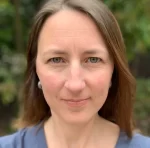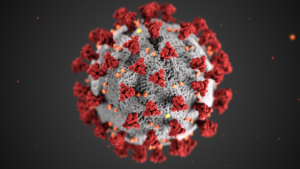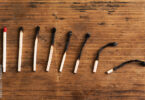Dyani Lewis talks misinformation, podcasts, and why long-form journalism will always have a place in science reporting

Science journalists play a key role in public interest reporting.
Director of the National Centre for Public Awareness of Science, Professor Joan Leach, says science journalism plays three key roles. It drives policy by spreading sound science, prevents the dissemination of poor science and acts as a degree of separation between the public relations departments of scientific institutions and the public.
The boom of digital science media outlets and blogs is proof the public is thirsty for stories on the latest scientific research but the science journalist is becoming an endangered species at major media outlets.
“Embedded in Australian news rooms, the investigative science journalist is a rare beast,” Leach wrote.
“The disappearance of the specialist science correspondent means a loss of personnel with the time and the expertise to probe deeply and to ask uncomfortable questions. The consequences are declines in the breadth, depth and quality of science coverage.”
Talking to Crikey, Sydney University public health expert Emeritus Professor Simon Chapman said “journalism now is kind of a revolving door”.
Specialist science journalists had the authority and scientific background to produce articles led by disciplined research and the understanding that comes only with experience. Now science is left to mainstream journalists who are under constant pressure to publish attention-grabbing headlines quickly to feed the 24/7 news cycle.
Chief executive of the Australian Science Media Centre, Susannah Elliot, says that adds up to poorer quality science coverage. “This loss of specialist reporters means that there is no one to fight for good science in editorial meetings or look for science angles in everyday news stories,” she wrote in The Conversation.

The absence of qualified science journalists in mainstream media was made more apparent than ever during the Covid-19 pandemic.
UK psychologist Professor Helene Joffe researched how the public views infectious diseases in a 2011 paper. She found “the mass media solidify new events” by providing the initial images, symbols and metaphors which shape how we experience the event. “This then combines with people’s group-based ideologies and histories to create their representations of the event.”
News outlets play an essential role in shaping the public and political response to a health crisis and more widely the response to any advancements or events in health, environment, technology or other scientific fields.
If journalists are not equipped to produce informed analytical reporting on scientific matters, science journalism threatens to slip into the realm of he-said-she-said journalism.
In a 2010 debate, journalist Ed Yong argued processing and filtering scientific research was the role of science journalists. In science, there is an objective truth, and it is the ethical responsibility of journalists to not give false balance to baseless research.
“It is clear to me that science journalists should not take the side of any particular scientist, of a specific idea, or even of science itself. But it is imperative that we take the side of truth,” Yong said.
However, analysis and research take time and money – luxuries science journalists do not have.
Researcher and science writer, Martin Robbins says full-time reporters have to cover breaking stories fast and churn out several articles a day.
“Under that sort of pressure, even if the journalist wants to delve deeper into the murky depths of a story they may simply not have the time to do it justice,” he wrote in The Guardian.
If traditional media outlets continue to turn away from specialist science journalism, they will quickly fall behind in public interest reporting.
Media distrust is at an all-time high. If media outlets do not provide journalists with the resources to produce comprehensive science journalism, audiences will turn elsewhere for their analysis of scientific issues. Places where misinformation is not as tightly regulated.
Featured image: A laboratory worker takes a swab test by Mufid Majnun via Unsplash







